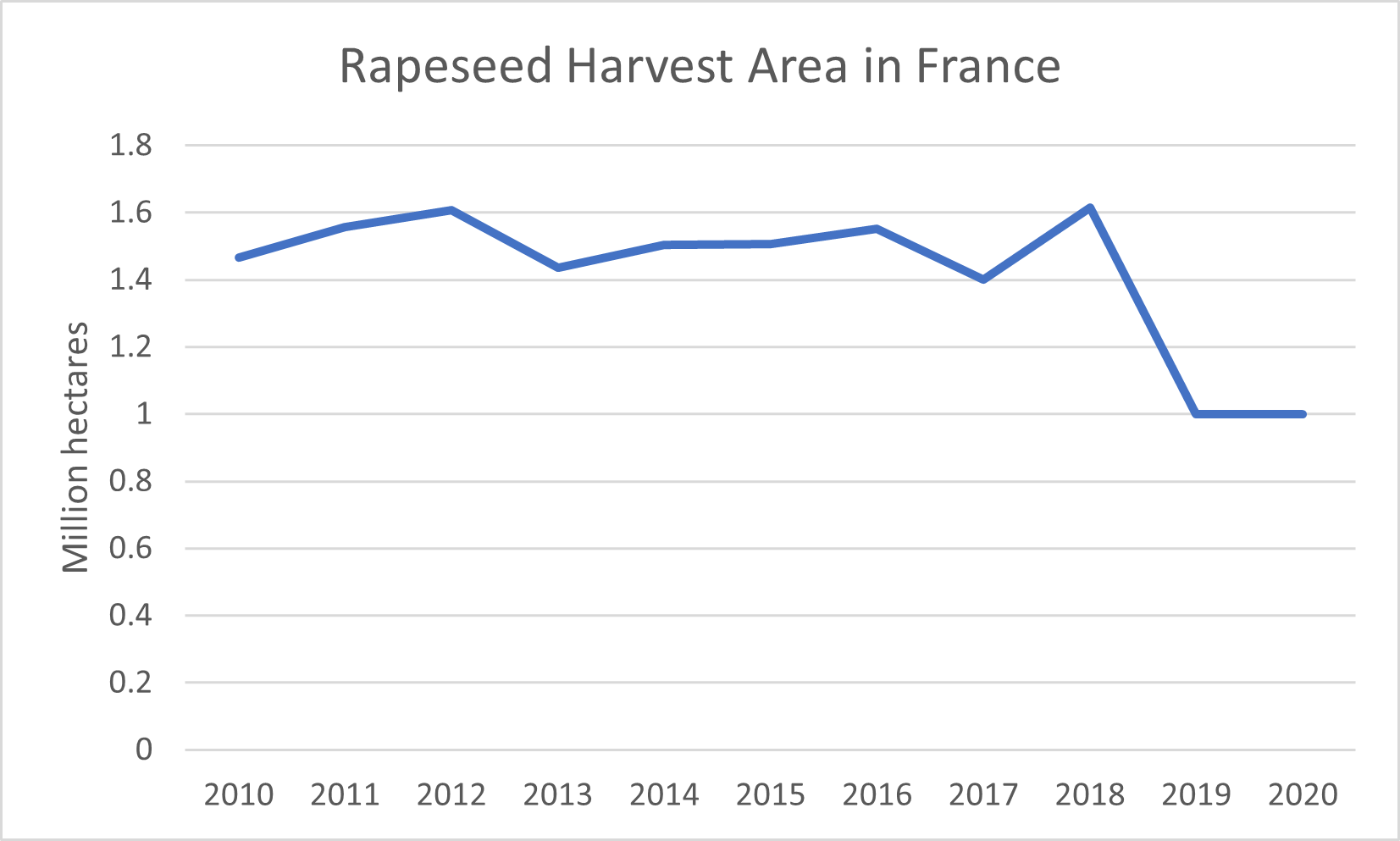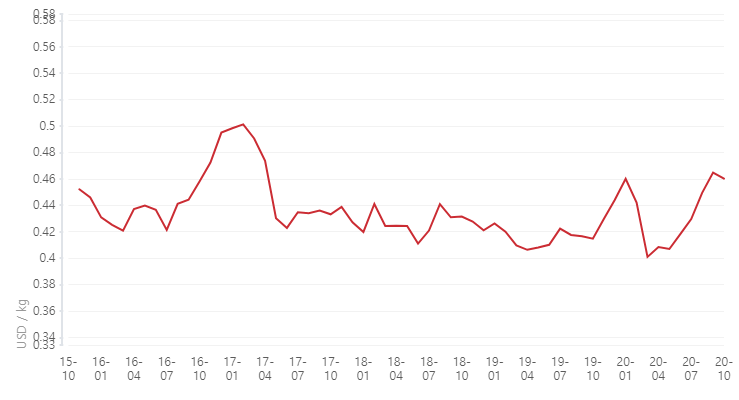Declining Rapeseed Production Areas in France
Rapeseed production areas in France have been low for two consecutive years as the total harvest area for this season remained at 1 million ha, similar to last year’s numbers, following dry sowing conditions during late summer.

EU Planted Areas Decrease
Planted areas for rapeseed have decreased for 2021 in both the EU and the UK compared to last year. The region in general has had to deal with insect damage along with the dry spell. Increasing production costs and declining yields have also discouraged suppliers from expanding on production.
The estimate of the 2021 rapeseed production in the EU and the UK combined was approximately 17.1 million MT, which is a slight decrease from last year’s numbers of USD 17.3 million MT. It is estimated that the UK rapeseed area will decrease by 29% at 351K ha. In line with the production trend, rapeseed import estimates for the EU and the UK was amended from 6.2 million to 6.3 million MT in 2020/2021.
France Hit Hard
Out of the countries, France was the worst hit. While early fail rains have helped mitigate the effects for some rapeseed crops, it was not enough to revive the already damaged crops in France. France is one of the biggest rapeseed producers within Europe, ranging at a production volume of approximately 4.9 million metric tons in 2018. The average trend for production areas in the last ten years had been at approximately 1.5 million ha. After averaging at 1 million ha during the last two years, production areas in 2021 are expected to decrease even further below the 1 million ha mark.

Domestic Prices of Rapeseed in France. Source: Tridge
Germany and Poland Alleviates the Decline, For Now
Other top two producers Germany and Poland, on the other hand, are seeing a better season as the rains that alleviated the dry period were conducive to production. In fact, the rapeseed harvest area for Germany is estimated to increase by 70K-100K ha after a summer harvest of 954K ha. Within Poland, summer crops were harvested in areas of 830K ha with the winter rapeseed sowing completed and expected to match the target level.
The EU is the world’s largest producer of rapeseed, accounting for approximately 30% of total production. While Germany and Poland’s stability is expected to slow down France’s decline as of current, continuous production area declines will inevitably impact production on a larger scale.
Source
- FAOSTAT
- Reuters. "Rain to help EU rapeseed but too late to avert French area drop."
- Bloomberg Green. "Drought and Heat Could Be ‘Death Blow’ for French Rapeseed."
- Successful Farming. "STRATEGIE GRAINS SEES EU AND UK RAPESEED CROP AREA DOWN SLIGHTLY."



